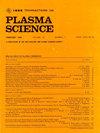基于深度学习的热调制石墨烯支撑多功能生物传感器逆设计方法
IF 1.5
4区 物理与天体物理
Q3 PHYSICS, FLUIDS & PLASMAS
引用次数: 0
摘要
利用石墨烯和二氧化钒(VO2)设计了一种电和热可调吸收剂。位于顶部的单层石墨烯片充当多波段谐振器,其电压可调能力允许控制响应。增加石墨烯的化学势可以在较低频率下实现宽带响应。VO2层被放置在石墨烯和背面层之间。在较低温度下,VO2作为介电间隔器工作,实现多波段共振。在300 K以下,该器件作为超窄带多波段吸收器,具有显著的灵敏度(S),分别为60 GHz/RIU、60 GHz/RIU和210 GHz/RIU,质量因子(Q)分别为84、38和68。探讨了其生物传感能力,特别是其在检测疟疾和葡萄糖方面的能力。这种创新的结构取代了传统的介电间隔器,并引入了热可调性。随着温度的升高,VO2的电导率上升,将器件转变为反射器。本文章由计算机程序翻译,如有差异,请以英文原文为准。
Inverse Design Approach by Deep Learning for Thermally Modulated Graphene Supported Multi-Functional Bio-Sensor
An electrically and thermally tunable absorber is designed using graphene and vanadium dioxide (VO2). A monolayer graphene sheet positioned on top acts as a multinarrowband resonator, with its voltage tunability capability allowing for controlled responses. Increasing the chemical potential of graphene results in wideband responses achieved at lower frequencies. A VO2 layer is placed between the graphene and the back layer. At lower temperatures, VO2 operates as a dielectric spacer, enabling multiband resonance. Below 300 K, the device functions as an ultranarrow multiband absorber, demonstrating remarkable sensitivity (S) of 60 GHz/RIU, 60 GHz/RIU, and 210 GHz/RIU with quality factor (Q) 84, 38, and 68, respectively. Its biosensing capabilities are explored, particularly its proficiency in detecting malaria and glucose with high sensing performance. This innovative configuration substitutes conventional dielectric spacers and introduces thermal tunability. As the temperature increases, the conductivity of VO2 rises, transforming the device into a reflector.
求助全文
通过发布文献求助,成功后即可免费获取论文全文。
去求助
来源期刊

IEEE Transactions on Plasma Science
物理-物理:流体与等离子体
CiteScore
3.00
自引率
20.00%
发文量
538
审稿时长
3.8 months
期刊介绍:
The scope covers all aspects of the theory and application of plasma science. It includes the following areas: magnetohydrodynamics; thermionics and plasma diodes; basic plasma phenomena; gaseous electronics; microwave/plasma interaction; electron, ion, and plasma sources; space plasmas; intense electron and ion beams; laser-plasma interactions; plasma diagnostics; plasma chemistry and processing; solid-state plasmas; plasma heating; plasma for controlled fusion research; high energy density plasmas; industrial/commercial applications of plasma physics; plasma waves and instabilities; and high power microwave and submillimeter wave generation.
 求助内容:
求助内容: 应助结果提醒方式:
应助结果提醒方式:


